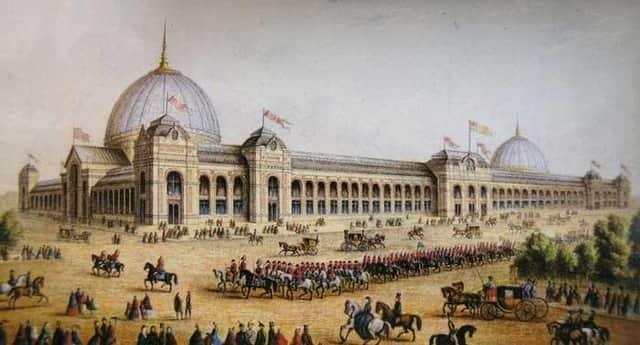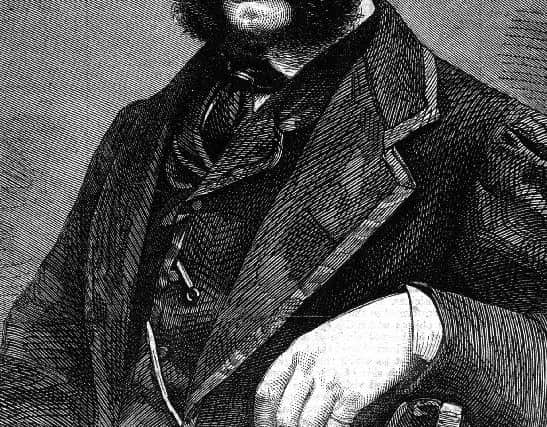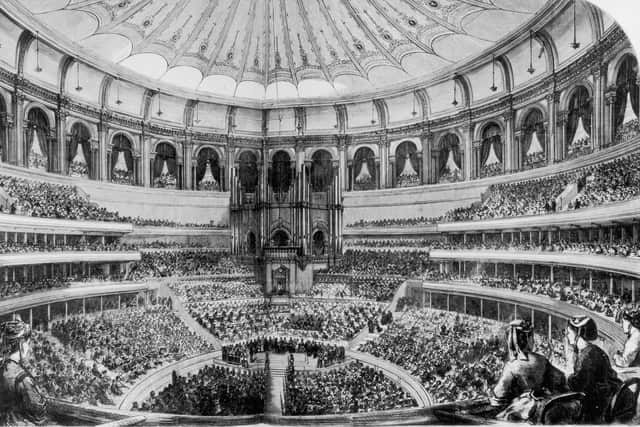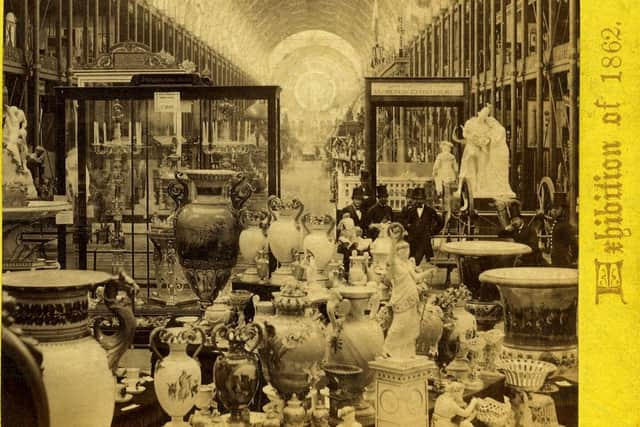Forgotten Ulster architect designed a fire engine and improved the umbrella


Born in Ballysillan in 1823, Francis attended the Royal School Dungannon and then the Royal Military Academy in Woolwich before accepting a commission with the Royal Engineers.
Along with the Albert Hall, Fowke’s impressive architectural portfolio included the 1862 International Exhibition Hall in London, the National Gallery of Ireland, the Royal Museum of Scotland, and parts of London’s Natural History and Victoria and Albert museums.
Advertisement
Hide AdAdvertisement
Hide AdHe also acquired patents for his remarkably wide-ranging inventions, including a military fire-engine, a folding bellows camera, a portable rubber bath, mobile scaffolding, an improved umbrella and a collapsible military pontoon-bridge.


Though mostly unhailed in his city of birth, after Captain Fowke died suddenly of a haemorrhage on 4 December 1865 the influential British Civil Servant and cultural guru Sir Henry Cole said of him, “England has lost a man who felt the spirit of his age, and was daring enough to venture beyond the beaten path of conventionalism... a man of science, possessing a fertility of invention which amounted to genius.”
Captain Fowke’s best-known architectural accolade - London’s Royal Albert Hall - was his last; he designed it, but after his sudden death in 1865 it was completed by another military engineer, Major-General H.Y.D. Scott.
Fowke’s overall plans were adhered to, particularly his world-famous elliptical amphitheatre and tiers of lush audience boxes, though Scott amended the exterior of the building.
Advertisement
Hide AdAdvertisement
Hide AdThe Albert Hall is familiar to anyone who’s attended concerts there or watched the Proms on TV and Fowke’s ornate designs are much applauded, but one of his other architectural edifices, long since demolished, wasn’t so popular!


London’s six-month-long International Exhibition of 1862 featured over 28,000 exhibitors from 36 countries and attracted about 6.1 million visitors.
It was housed on a 23-acre South Kensington site in a special building designed by Captain Fowke.
The building consisted of a main structure with two adjoining wings, boasting two enormous domes said to be the largest in the world. But the domes were publicly derided as ‘colossal soup bowls’ and ‘a national disgrace’ and the building was called ‘a wretched shed’ by the influential Art Journal.
Advertisement
Hide AdAdvertisement
Hide AdBut the Captain can’t be held totally responsible for the building.


His plans had been greatly altered as the Exhibition progressed and he shouldn’t have been blamed for its deficiencies from an artistic point of view.
In any case, the lighting, ventilation and layout was considered to have been enormously successful.
There are many who feel that Francis Fowke’s building deserves as much architectural recognition as the earlier but much more greatly hailed 1851 Crystal Palace exhibition building.
Advertisement
Hide AdAdvertisement
Hide AdI’ve already mentioned some of his inventions - including a folding bellows camera, a military fire-engine, a portable rubber bath, mobile scaffolding, an improved umbrella and a collapsible military pontoon-bridge.
Details of these, and of more of Fowke’s various and varied patents, are held in the archives of London’s Victoria and Albert Museum.
Roamer will try, during the ongoing lockdown, to find more information and illustrations, but in the meantime two of Fowke’s inventions are mentioned on the V&A Museum’s website and in other sources.
He first exhibited his canvas pontoon at the 1855 Paris International Exhibition but it wasn’t until five years later in 1860 that testing began in earnest.
Advertisement
Hide AdAdvertisement
Hide AdHe’d claimed in a lecture to the Royal United Service Institution that his pontoon was “capable of remedying many, if not all, of the defects of the existing system” and in July 1860 his invention was demonstrated in public on the Serpentine in Hyde Park.
Sir Henry Cole was present at the demonstration and wrote in his diary “Experiment very successful with Volunteers and Royal Engineers.”
Fowke’s pontoon got some coverage in the Illustrated London News of 11 August 1860, with a photograph showing the military engineers rehearsing on dry land.
Encyclopedia Britannica described his invention as “a folding open bateau, made of waterproof canvas attached to sliding ribs, so that for transport it could be collapsed like the bellows of an accordion and for use could be extended by a pair of stretchers.”
Advertisement
Hide AdAdvertisement
Hide AdIn 1861 Fowke sent the War Office “documents and drawings explanatory of my canvas pontoons” enclosing some photographs. He later sent his invention to the Military
Storekeeper at Chatham but it’s unclear if it convinced the military authorities.
As of now, Roamer has no further information to share about Captain Fowke’s fire-engine, rubber bath, mobile scaffolding, or improved umbrella but the first British camera to use accordion-type bellows was patented by him in May 1856.
In Britain, a number of prototype designs for cameras with flexible bodies appeared in the early 1850s, but the first bellows cameras were made in America.
Advertisement
Hide AdAdvertisement
Hide AdFowke’s camera had rectangular-section leather bellows connecting two wooden frames.
A removable ‘baseboard’ could be fitted on to either the long or short sides of these frames for horizontal or vertical-format pictures.
A brass rod, attached to the back panel, gave extra support and stability.
It was manufactured from the summer of 1857 by the London firm of Ottewill & Co. and was regarded as the most portable and lightest camera available.
A message from the Editor:
Advertisement
Hide AdAdvertisement
Hide AdThank you for reading this story on our website. While I have your attention, I also have an important request to make of you.
In order for us to continue to provide high quality and trusted local news on this free-to-read site, I am asking you to also please purchase a copy of our newspaper whenever you are able to do so.
Our journalists are highly trained and our content is independently regulated by IPSO to some of the most rigorous standards in the world. But being your eyes and ears comes at a price. So we need your support more than ever to buy our newspapers during this crisis.
With the coronavirus lockdown having a major impact on many of our local valued advertisers - and consequently the advertising that we receive - we are more reliant than ever on you helping us to provide you with news and information by buying a copy of our newspaper when you can safely.
Advertisement
Hide AdAdvertisement
Hide AdYou can also enjoy unlimited access to the best news from across Northern Ireland and the UK by subscribing to newsletter.co.uk
With a digital subscription, you can read more than five articles, see fewer ads, enjoy faster load times, and get access to exclusive newsletters and content. Visit https://www.newsletter.co.uk/subscriptions now to sign up.
Thank you